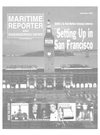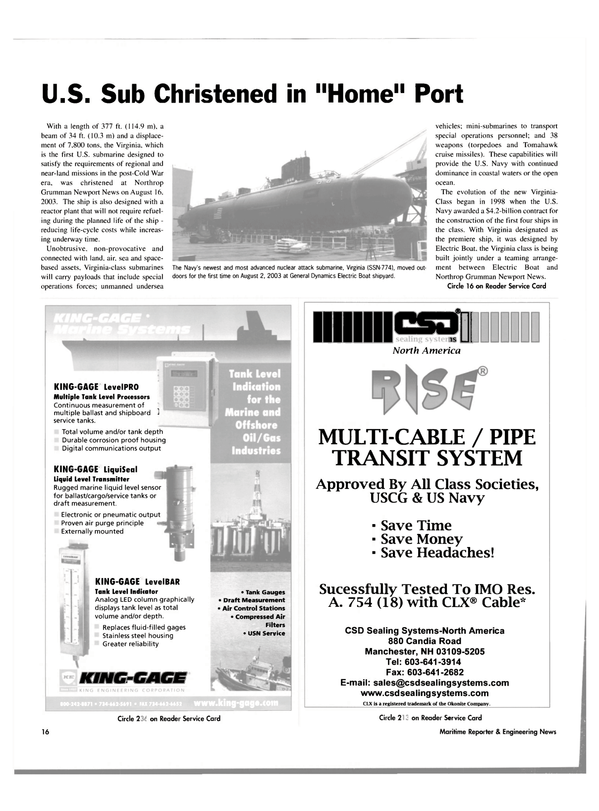
U.S. Sub Christened in "Home" Port
With a length of 377 ft. (114.9 m), a beam of 34 ft. (10.3 m) and a displacement of 7,800 tons, the Virginia, which is the first U.S. submarine designed to satisfy the requirements of regional and near-land missions in the post-Cold War era, was christened at Northrop Grumman Newport News on August 16, 2003. The ship is also designed with a reactor plant that will not require refueling during the planned life of the ship - reducing life-cycle costs while increasing underway time.
Unobtrusive, non-provocative and connected with land, air, sea and spacebased assets, Virginia-class submarines will carry payloads that include special operations forces; unmanned undersea vehicles; mini-submarines to transport special operations personnel; and 38 weapons (torpedoes and Tomahawk cruise missiles). These capabilities will provide the U.S. Navy with continued dominance in coastal waters or the open ocean.
The evolution of the new Virginia- Class began in 1998 when the U.S.
Navy awarded a $4.2-billion contract for the construction of the first four ships in the class. With Virginia designated as the premiere ship, it was designed by Electric Boat, the Virginia class is being built jointly under a teaming arrangement between Electric Boat and Northrop Grumman Newport News.
Circle 16 on Reader Service Card
Read U.S. Sub Christened in "Home" Port in Pdf, Flash or Html5 edition of September 2003 Maritime Reporter
Other stories from September 2003 issue
Content
- New SWATH From ACMA page: 8
- IZAR Delivers LNG Inigo Tapias page: 10
- Wallace McGeorge Modified for Deep Dredging page: 11
- Careful, Your Species May Be Non-Indigenous page: 12
- U.S. Sub Christened in "Home" Port page: 16
- HSV 2 Swift Delivered to U.S. Navy page: 17
- A Change in Course page: 18
- Univan Reports Steady Growth page: 20
- Payload Pivotal to Fast Sealift Ship page: 24
- The Chairman's Influence on Design page: 24
- The Lure of the Electric Drive page: 26
- Very Large Systems page: 27
- Generators And Synchronous Condensers page: 27
- Cat Power For Unique Boat page: 30
- MAN B&W Flexibility With Two Strokes page: 31
- "Ink" It In: WMTC a Must for Maritime Professionals page: 34
- Guido Perla: Colombian Born, American Made page: 38
- Thrane & Thrane Offers the Capsat Fleet33 page: 42
- SeaWave Family Designed for Ease of Use page: 42
- PGS Geophysical Renews With Telenor page: 43
- Nera F 5 5 Terminal Gets Inmarsat Type Approval page: 44
- Monitoring Technology...Advanced page: 45
- Outlook for Floating Production Systems page: 52
- Meyer Werft Delivers to RCCL page: 57


